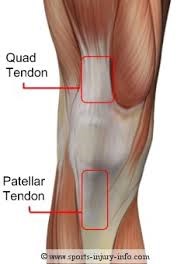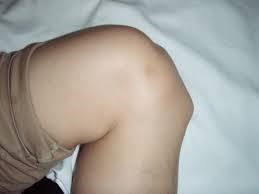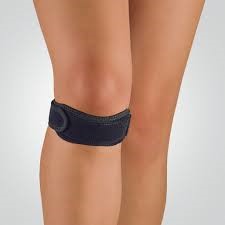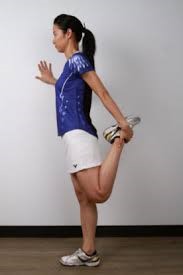What is Osgood Schlatter Disease?
Osgood Schlatter Disease is inflammation of the Patella Tendon among teens. The Patella Tendon is the connecting structure that is just below the lower margin of the knee cap. Generally, other than pain, swelling will be noted over the said tendon. This condition is named after two orthopedic surgeons, Robert Bayley Osgood from America and Carl B. Schlatter from Switzerland.
 This pain will interfere with your child’s daily activities. This condition is more prevalent in children and teens who are active with agile activities such as running, jumping, as in playing football, basketball, netball, Ballet dancing and so on. Boys are more affected with this condition as compared to girls. Lately this difference is slowly narrowing as we see more girls getting involved in physical activities than before. Because girls mature physically earlier than boys, Osgood-Schlatter knee is seen in girls at 11 – 12 years of age and 13 – 14 in boys. The condition eventually subsides when the growth spurt stops.
This pain will interfere with your child’s daily activities. This condition is more prevalent in children and teens who are active with agile activities such as running, jumping, as in playing football, basketball, netball, Ballet dancing and so on. Boys are more affected with this condition as compared to girls. Lately this difference is slowly narrowing as we see more girls getting involved in physical activities than before. Because girls mature physically earlier than boys, Osgood-Schlatter knee is seen in girls at 11 – 12 years of age and 13 – 14 in boys. The condition eventually subsides when the growth spurt stops.
What are the signs and symptoms of Osgood-Schlatter?
The main symptom is pain. The level of pain experienced with Osgood-Schlatter varies from individual to individual. There will be individuals who experience low intensity pain while running, going up or down stairs and running. Some however will experience continuos intense pain. This pain gets worse even with light activities such as walking.
Commonly this inflammation will exist in one knee only but it can involve both knees. The pain and discomfort can persist for several weeks or even months. The condition can relapse repeatedly as long as growth maturity of the skeletal system has not been reached.
The Tibial tuberosity structure will look swollen. This structure lies prominently just below the patella. The patella Tendon attaches to this structure. If it is accidently knocked, the individual will experience intense pain.
Diagnosis
Pain can be reproduced with strong a contraction of the Quadriceps muscle. (Resisted Quadriceps contraction). The patient is asked to straighten the knee while resistance is applied to it. Pain will also be experienced when the Tibial Tuberosity is tapped lightly. When the tendon is inflamed, the skin over it will appear red and swollen. There is even a possibility of the knee being unstable.
In chronic situations, where the condition has been persistent, the Tibial Tuberosity will be more prominent as a result of increased growth. The doctor will sometimes consider sending the patient for an X-Ray.

Enlarged Tibial tuberosity of an Osgood-Schlatter patient
Treatment
Osgood-Schlatter disease can recover on its own. The symptoms will disappear once physical maturity is reached. This will take some time. In the meantime, the doctor can prescribe some medication and refer the child/teen for physiotherapy intervention.
Medication
Self-purchased pain killers from pharmacies can help. However it is strongly recommended to let the doctor have a look and prescribe the necessary medication.
Physiotherapy
A physiotherapist can help your child with stretching exercises. Stretching the Quadriceps and Hamstrings muscles will reduce the tension on the Patella Tendon. Strengthening exercises for the Quadriceps will restore strength and stability of the knee.
Other helpful tips;
- Rest your knee joint. Reduce or stop activities that increases pain such as, kneeling, running and jumping.
- Application of ice over the painful area will help to reduce pain and swelling.
- Use a knee pad during games and sports.
- Use a Patella tendon strap. This strap is used around the Patella Tendon. This will ease off the tension at the insertion by shifting the tension away to where the strap is. This in return can reduce pain.
- Your child can be advised not to perform any High Impact activities. Cycling and swimming can be encouraged while waiting for recovery.
 |
 |
|
Patella Tendon Strap |
Stretching of Quadriceps |
References
- Kathryn Refshauge (Author), Elizabeth Gass; Musculoskeletal Physiotherapy: Its Clinical Science and Evidence-Based Practice,
- Wikipedia
Images source
- http://www.sports-injury-info.com/patellar-tendonitis.html
- http://blog.active650.com/2013/03/bodyhelix-and-osgood-schlatters-disease.html#.V9fiFvkrLIU
- https://www.braceability.com/blog/osgood-schlatters-symptoms/
- http://www.newhealthadvisor.com/Snapping-Hip-Exercises.html
| Last Reviewed | : | 23 August 2019 |
| Writer / Translator | : | Daaljit Singh a/l Harbachan Singh |
| Accreditor | : | Se To Phui Lin |
| Reviewer | : | Halimah bt. Hashim |







